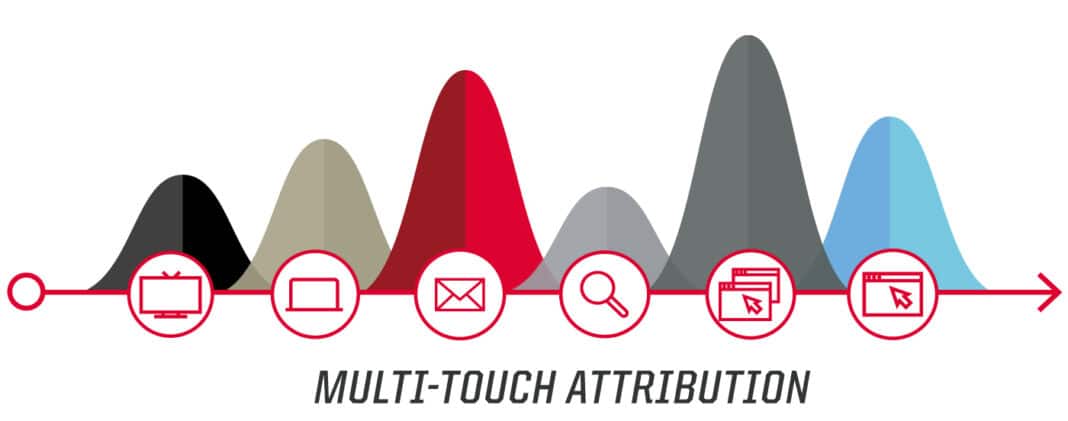Multi-touch attribution is a method of marketing measurement that allows marketers to see the value that each touchpoint has on driving a conversion. It takes into account all the touchpoints on the customer journey and designates a certain amount of credit to each channel. This method is important because it provides insights that can help marketers improve their campaigns and better understand how customers interact with their brand. Additionally, multi-touch attribution can help marketers identify which channels are most effective at driving conversions so that they can allocate their resources accordingly. While there are several different models of multi-touch attribution, each with its own advantages and disadvantages, this method of marketing measurement is an essential tool for any marketer who wants to optimize their campaigns and understand their customers’ behavior.
A company’s use of different advertising platforms can have a significant impact on a consumer’s purchase decision. In the case of Nike, for example, a potential buyer may be targeted with ads on multiple channels before making a purchase. First, they may see a display ad that catches their attention. Next, they may see a native ad on their Instagram feed that drives them back to the Nike site. Finally, they may visit the site with a promotional offer. Each of these touchpoints play a role in influencing the consumer’s decision, and collectively they provide a well-rounded picture of the product. As such, it is important for companies to carefully consider which platforms they use to reach their target audience.
Multi-touch attribution (MTA) models have become increasingly important for digital marketers in recent years. This is because MTA models provide a more granular, person-level view of attribution than traditional aggregate methods such as media mix modeling (MMM). MTA models are particularly well-suited to measuring the impact of digital campaigns, which often involve multiple touchpoints across multiple channels. By contrast, MMM relies on aggregate data and therefore cannot take into account the unique journeys of individual consumers. MTA models address this limitation by tracking individual interactions with digital campaigns and attributing credit accordingly. This person-level view of attribution can be extremely valuable for marketers looking to optimize their campaigns and better understand the customer journey.
In the age of digital marketing, touchpoints are numerous and constantly changing. Consumers are bombarded with advertising messages from a variety of channels, making it harder than ever for marketers to reach them. As a result, traditional methods of marketing attribution, which focus on a single touchpoint, are no longer effective. Multi-touch attribution provides visibility into the success of touchpoints across the customer’s journey, allowing marketers to make data-driven decisions about where to allocate their resources. This is increasingly important as consumers continue to evolve and become more adept at avoiding marketing messages. By utilizing multi-touch attribution, marketers can ensure that they are meeting consumers on the right channel at the right time.
Multi-touch attribution (MTA) is a data-driven approach to marketing that also aims to improve the consumer experience and increase marketing ROI. MTA uses data from multiple touchpoints along the consumer journey to understand how each interaction contributes to conversion. This detailed understanding of the consumer journey can help marketers to optimize their campaigns for maximum impact. For example, MTA can help marketers to identify which channels are most effective at driving conversions, and which message types are most relevant to each stage of the journey.
In addition, MTA can also help marketers to shorten sales cycles by engaging consumers with fewer but more impactful marketing messages. By using MTA to understand the consumer journey, marketers can make informed decisions that improve the efficiency and effectiveness of their campaigns.




